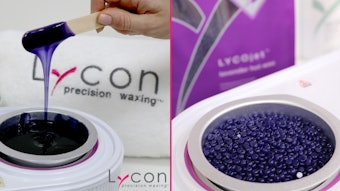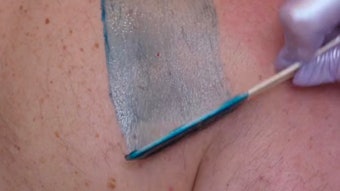
For many women and men, hair removal is more than a process, more than a routine and much more than simply a chore—it is a full-on battle. The current styles and trends for both sexes call for a smooth, virtually hair-free physique. However, obtaining a bare bod is not always easy. Depending on the method of hair removal used, the process can be time-consuming, stubble can reappear quickly, and ingrown hairs can become a painful, unsightly problem. Americans spend $10 billion on various products and services to remove unwanted fuzz. From razors to lasers, people are searching for the best solutions and experimenting with different ways to keep body hair at bay.
The history of hair removal dates back to prehistoric times. Archaeologists have found evidence that cavemen used sharpened stones and shells to remove their facial hair. Hair removal was also customary among the ancient Egyptians, who regarded hairlessness as a status symbol. Men routinely used razors made from bronze to shave their heads, while women used more extreme measures of depilation, including blending mixtures made from arsenic, starch and quicklime. They also used beeswax to pull hair from their legs.
During approximately 1500 B.C., recipes for hair removal included combining a tortoise shell with hippopotamus fat or mixing various animal bloods together to create a hair removal concoction. Feline waste was also considered a viable method.
The men’s safety razor (a precursor to the disposable razors of today) was invented in the 1880s, and the first commercial razor marketed to women was introduced in 1915. To this day, shaving remains the most commonly used method of hair removal, but that doesn’t mean it’s the best solution for everyone. Following are some modern hair removal methods that go beyond the blade.
Waxing
Waxing is a popular choice for many women and men because the results last longer than shaving. A typical waxing procedure will give the average client two-to-four weeks of smooth skin. Wax can typically be used anywhere on the body. For men, some of the most popular areas are the chest and back. For women, eyebrow and bikini waxes are often requested.
Pros. It provides long-lasting results, and effectively removes large amounts of hair at one time. It can be used on all skin types, and repeated waxing can lead to softer re-growth.
Cons. It is painful, and may burn skin and disturb hair follicles. Also, hair must be a certain length in order for waxing to be successful.
Chemical depilatories
Chemical depilatories are often used at home. These mixtures contain chemicals that weaken the hairs on the skin’s surface to the point where they can be wiped away with a cloth or sponge. The process usually takes between 5–10 minutes to complete. Depilatories are available in creams, gels, aerosols and powders. They are most commonly used on the legs, bikini area, underarms and face. Typical results can last up to a week.
Pros. Depilatories are easy to use, and provide longer-lasting results than shaving.
Cons. The chemicals used can irritate skin, and they emit odor.
Electrolysis
Electrolysis is the only procedure approved by the U.S. Food and Drug Administration (FDA) for permanent hair removal, although results can vary from person to person. It works by using a fine needle to transmit an electric current into a hair follicle to destroy its root. Because the hair is treated follicle by follicle, it is often a lengthy process. Even a small area, such as the upper lip, can take as long as four hours.
Electrolysis can be used to treat hair anywhere on the body except inside the nose and ears. Because hair grows in stages and each hair is not in the same stage at the same time, multiple electrolysis sessions are needed to achieve optimal results.
Pros. It is the only permanent hair removal method, and can be used on all hair colors and skin types.
Cons. It is a time-consuming process that may be painful.
Laser and intense pulsed light (IPL)
Laser and IPL hair removal are similar procedures that use different light-based technologies. Laser hair removal uses a pure monochromatic beam of laser light to target the melanin in the hair and damage the hair follicle. IPL hair removal uses a broad-based light that emits multiple wavelengths as opposed to one beam. With each procedure, six-to-eight treatments are usually needed for best results.
Laser hair removal has come a long way since the introduction of the procedure in the late 1990s. Developments in laser and light-based technology now allow for the safe and effective treatment of many different skin types, although laser and IPL hair removal clients should be evaluated on a case-by-case basis.
Pros. They offer permanent hair reduction, are safe for many skin types and can be used to treat large areas.
Cons. Burning or hyperpigmentation may occur, the treated area will be sensitive immediately following treatment, and white or light-colored hair cannot be treated.
Radio frequency and IPL hair removal
This method of hair removal uses a combination of radio frequency energy and IPL to selectively target and damage hair follicles. The absorption of radio frequency is not dependent on melanin, so this combination can treat a wider range of skin and hair types than laser hair removal. Each treatment typically results in less hair growing back, as well as a lightening of the hair color. On average, six-to-eight treatments are required for maximum hair reduction. Lighter-colored hair usually requires more treatments than darker hair.
Pros. It can be used on all skin types, large areas can be treated, and it can result in permanent hair reduction.
Cons. It may cause redness or blistering.
No one-size-fits-all solution
Regulations concerning the training needed to perform electrolysis, and laser and light-based hair removal treatments vary by state, so it is essential to check with your state board concerning regulatory practices. (Editor’s note: To access the complete contact information of all the U.S. state boards, log on to www.SkinInc.com/education/statelicensing.)
Once clients are aware of their hair removal options, it is important to share with them that no solution is one-size-fits-all. Clients may find a combination of hair removal procedures best suit their needs. For example, one male client may want to get IPL hair removal on his back, but shave his chest; and one female client may want to get laser hair removal on her legs, but wax her bikini area. Luckily, there are a plethora of hair removal tools available in the battle to be bare.
Louis Silberman is the president of National Laser Institute, one of the largest cosmetic laser training centers in North America. As an expert in medical esthetics, Silberman has been a driving force behind the development of comprehensive courses for professionals entering the cosmetic laser field. He can be reached via e-mail at [email protected].










